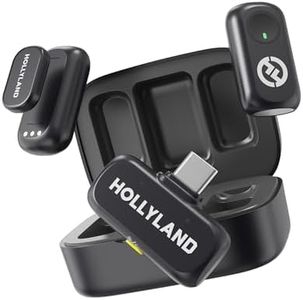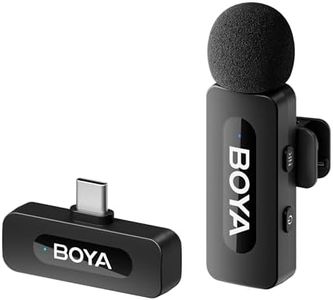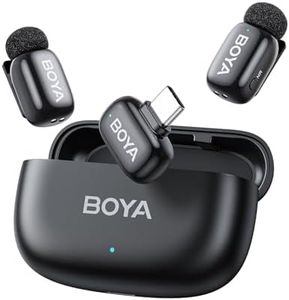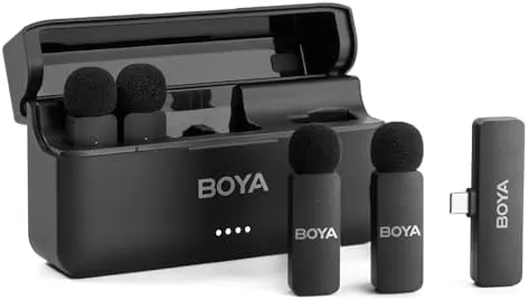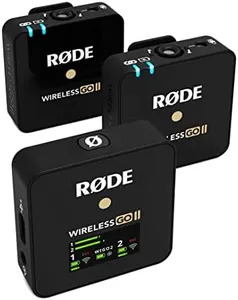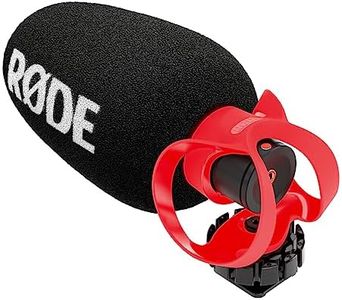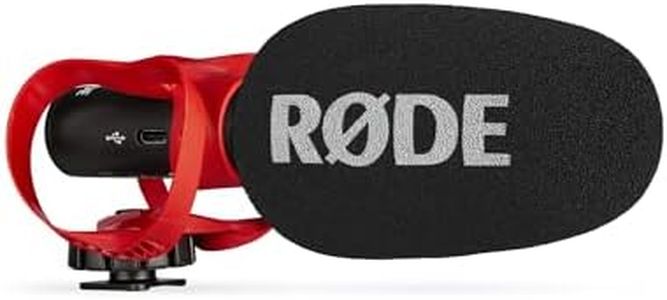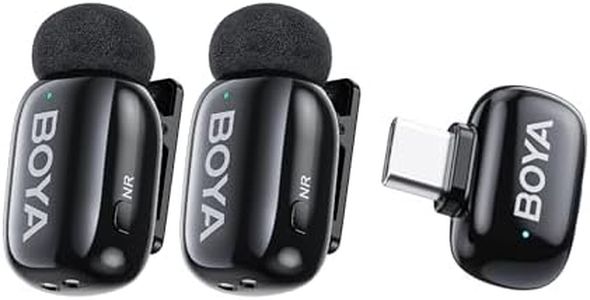We Use CookiesWe use cookies to enhance the security, performance,
functionality and for analytical and promotional activities. By continuing to browse this site you
are agreeing to our privacy policy
10 Best Microphone For Smartphone For Video Recording
From leading brands and best sellers available on the web.Buying Guide for the Best Microphone For Smartphone For Video Recording
Choosing the right microphone for your smartphone when recording video can make a big difference in the quality of your final content. While your smartphone's built-in microphone might work for casual use, an external microphone almost always provides clearer, more professional sound. Before shopping, think about where you’ll be recording (indoors, outdoors, noisy spots), what you’re capturing (voice, music, ambient sounds), and how portable you want the mic to be. Also, consider how easy it is to use and connect to your phone—some microphones require specific adapters or apps. Understanding your needs will help you pick a microphone that fits your style and shooting conditions best.Microphone Type (Lavalier, Shotgun, Handheld, etc.)This spec refers to the design and intended usage of the microphone, such as clip-on lavalier (lapel) mics, directional shotgun mics, or standard handheld mics. Lavalier mics are small and clip to your clothing, making them great for interviews or vlogging where you want the mic to be invisible and close to your mouth. Shotgun mics are longer and point directly at the sound you want to record, usually mounted on your phone or a stand, ideal for filming at a distance or in noisy environments as they pick up less surrounding noise. Handheld mics are bulkier but good for street interviews. To choose, think about whether you need something discreet, something that focuses on a single sound source, or a mic for more dynamic on-the-go interviews.
Connection Type (3.5mm, USB-C, Lightning, Wireless)The connection type determines how the microphone plugs into your smartphone, such as the standard 3.5mm headphone jack, USB-C (common on newer Androids), Lightning port (for iPhones), or wireless connections (like Bluetooth). It’s crucial because your phone needs to support the type of connection the microphone uses; some phones no longer have a headphone jack, while others might need an adapter. Always check which ports your phone offers and pick a microphone that matches them, or ensure you have (and want to use) any necessary adapters.
Pickup Pattern (Omnidirectional, Cardioid, Bidirectional)The pickup pattern describes the direction from which the microphone captures sound. Omnidirectional mics pick up sound equally from all directions, which is great for roundtable discussions or capturing ambient sound. Cardioid mics are more focused, recording mainly from the front and minimizing side and rear noise, making them ideal for single-person vlogs or interviews. Bidirectional mics pick up sound from the front and back, useful for two-person interviews facing each other. Choose the pickup pattern based on your recording scenario: for talking directly into the mic, cardioid is better; if capturing everyone's voice around, omnidirectional works best.
Size and PortabilityThis spec refers to the physical dimensions and weight of the microphone, impacting how easy it is to carry and use. Smaller, lighter mics are suitable for mobile shooting and travel, especially if you need to carry your gear all day or want the mic to stay unnoticed. Larger mics may offer better sound quality but can be cumbersome and less discreet. If you often film on location, portability is key; if you're stationary, you can consider bigger models.
Power Source (Battery-Powered, Plug-in-Power, Wireless Rechargeable)Some microphones need external batteries, some use the power from your phone, and others (especially wireless models) have built-in rechargeable batteries. Battery life can affect how long you can record without interruption. Plug-in-power mics are generally more convenient but might draw on your phone’s battery. If you record for hours or in places where charging isn’t easy, consider a mic with a long-lasting or easily replaceable power source.
Accessories Included (Windshields, Clips, Mounts, Cables)Many microphones come with useful extras like windshields (for reducing wind noise outdoors), mounting clips, stands, or necessary cables and adapters. Accessories can make your recording setup easier and improve audio quality. For example, a windshield is important if you record outdoors, while a sturdy clip or mount is critical if you want hands-free use. Think about what extras you actually need, and check if the microphone includes or supports them.
